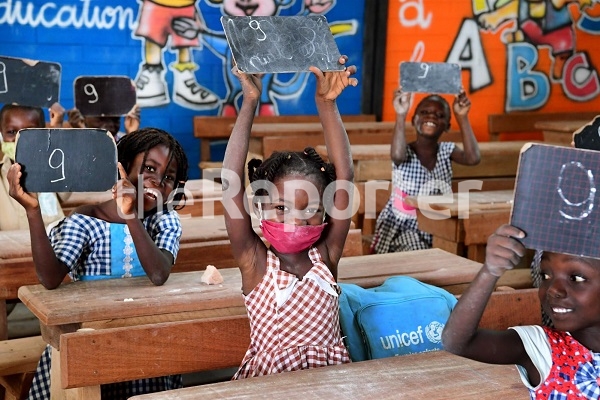Development planning, Selibe Mochoboroane (SM), has been crisscrossing the country to inspect the state of government projects, in line with the mandate of his ministry which is the focal point for coordination, implementation of national policies and plans aimed at achieving both the national and international initiatives.
The ministry has penned down a five-year strategic plan to take care of the gaps, challenges and limitations that are not addressed in both the National Strategic Development plan (NSDPI) and the ministry’s strategic plan.
In this interview with theReporter’s ‘Majirata Latela (ML), the minister gives us more insight into his excursions.
ML: We have in the past few weeks seen you and your team of officers visiting different government development projects. What was reason for the visits?
SM: The first reason is that it is the mandate of this ministry to oversee all governments projects, from as early as when they are presented as a proposal until completion of their life cycle, through the department of project cycle management and department of monitoring and evaluation, to make sure a project serves the aim it is intended to. We went to those projects to perform the mandate of the government as per our five-year strategic plan. It is our responsibility as the ministry to see if projects do perform well, by monitoring them.
ML: Which projects did you visit and what can you say about them?
SM: I have visited about 20 projects. We have two scenarios, of projects that have been done correctly and those that have not been done correctly. I noticed that the successful ones are due to the fact they followed government procedures to completion, like the Lesotho Wool and Mohair Project which is fully funded by the World Bank to the tune of M574million; this project is basically meant to reproduce the desired of sheep and goat breeds, for quality wool and mohair production.
The other two components of the project are the building of shearing sheds around the country and improvement of graze lands. This project is a success from where I am standing.
The other project is the Ha Belo Industrial Park which impressed me in that they are still working within their time frame and are utilising the capital budget very well.
The second scenario is that of the High Altitude Training Centre at Ramarothole which was started in 2005; it clearly shows that the execution of the plan and the vision were a challenge, the project took a long time to plan and now it is consuming a lot of money because the building has to be renovated and fixed even before it is used.
The government of Lesotho has spent more than M50million on this project, but it has taken 15 years before using it. That means the M50million has been gone to waste. The project is a white elephant because it does not serve its intended purpose.
ML: We have heard through different media platforms that you were not happy with many of the projects not being complete while some were not performing up to standard. What can you say about these projects?
SM: The most challenging issue here is the poor management of state resources. My concern is that Lesotho already has a challenge of limited state resources yet, sadly, the little that we have we do not use appropriately. There is no reason for projects to fail; it is the responsibility of the concerned minister, principal secretary, director and chief accounting officer to make sure that a project eventually serves its intended purpose.
If a project does not serve its purpose, then it means there was no one monitoring the project. This also shows that my ministry also did not perform its monitoring duties.
ML: What do you think happened, that resulted in the projects being left unfinished?
SM: People have been just too blasé, from line ministries which are the implementers to my ministry which is the supporting ministry.
ML: According to your investigations, what has happened to the money that was allocated to complete the projects?
SM: In 80 percent of the projects that I visited, the money has been used on those projects but the job has been done in such a way that the projects do not respond to the challenges that they were meant to address.
For example, the High Altitude Training Centre has been a white elephant for years now and the person who had to make sure that the facility is used for what it was meant for did not do their job.
Yes, there are instances where the money was paid but the project was not done at all. For example, there is a project of building park homes which was valued at M7.8million. Those park homes have been ‘built in the air’, as they are nowhere to be found.
The park homes were supposed to be built at ‘Milikane, Sehlabathebe and Ha Sekake. The payment has been made but there is no physical building.
ML: Do you think there has been some kind of corruption in these projects and would you want the Directorate on Corruption and Economic Offences (DCEO) and the Public Accounts Committee to investigate?
SM: Yes, to some extent. There is corruption and a typical example is this of the park homes that have not been built even though payment was made. There is no way payment can be done without the completion of the project, because payment is made subject to a certificate of successful completion of a project.
The person who initiated the payment needs to account for why he/she initiated the payment. There is also fraudulent misinterpretation here because the company that is recorded as the service provider has shown evidence that it has never claimed any payments and that whoever claimed on its behalf did it with a forged signature. The other issue is that there is another company to which the money was paid, only for the company to transferred the money immediately. DCEO has to investigate this. There is obviously a money laundering syndicate at work here.
ML: What advice would you give to the government on how to handle development projects so that public funds do not get wasted on unfinished projects.
SM: With the advent of coalition governments in 2012 the country has experienced a serious crisis of unstable governments. That instability has resulted in poor continuity because people come with different plans and they may not be interested in some of the projects, resulting in poor continuity.
There have been clear incidents of corruption where ministers and public servants were involved in, and also with principal secretaries who are given short-term employment contracts. Most of the time they find themselves involved in corruption because they feel they will be leaving after a short while.
I am not surprised that the government is so broke; the cost of coalition governments is just too much, and the best solution could be the reforms.
There should be National Planning Board which will be oversee all these projects and make sure there is continuity even after governments change.
ML: Please give us an update/report on digital migration project which was supposed to be completed by June 2014 under your watch as communications, science and technology minister. Rumours persist that half of the budget was spent on food and lodging. How true is that?
SM: I’m not quite sure about that one, but what I know is that digital migration has been implemented in phases. Phase 1 is the distribution of towers network, which were built. The second phase has to be the construction of a complex that will house studios that are compatible to the network of towers.
Until now the government of Lesotho has not budgeted for that facility and what I have discovered is that ministry of communications had requested funding under FOCAC (The Forum on China-Africa Co-operation – a platform established by China and friendly African countries for collective consultation and dialogue and a cooperation mechanism between the developing countries, which falls into the category of South-South cooperation). However, this project does not fall under the four important projects that FOCAC is financing this year; that means they will have to wait maybe until next year. The ministry is still looking for funding of the project.
ML: Your ministry houses the projects appraisal committee and monitoring and evaluation section. How do these work?
SM: There is a Public Sector Investment Committee (PSIC) which is composed of government officials from all ministries and co-chaired by the ministry of development planning and ministry of finance. The projects are presented before PSIC which then scrutinizes the proposals on whether they meet the set criteria; that is where they are appraised.
The second stage is that of Monitoring and that of Project Management Cycle which work hand in hand to monitor projects. In the process our ministry will have to go on field trips to monitor the progress on the ground, the last stage is to make sure the project is a success.
ML: We appreciate that the ministry of planning is tasked with, among others, improving coordination of planning, policy formulation and results tracking. It also has a duty improve resource mobilisation and allocation deficiency. What challenges/limitations does it encounter in this regard?
SM: The first challenge is not having a vision. Lesotho has failed with Vision 2020. When you match the National Strategic Plan with our budget, you get to realise that they do not match; we will be saying that the country is in serious need of food security, but when you look at the budget, more money is given to ministries which are not in crisis.
When it comes to the Sustainable Development Goals, they show that development should be felt by the current and the future generations. The challenge that we have is that we are unable to translate our plans into action that goes to together with budgeting. In our case, donors complain of unfinished projects, corruption and s very high wage bill. Our human resources do not match production.









